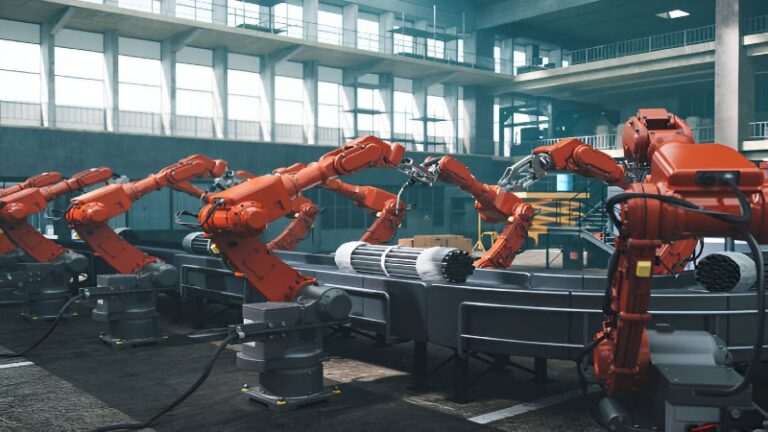Technological evolution rarely follows a linear path. Instead, it accelerates in bursts, fundamentally altering how we work and live. We’re currently experiencing such a transformation with the rapid advancement of autonomous systems across multiple sectors. These intelligent technologies, from sophisticated AI software to advanced robotics, are no longer just tools for efficiency; they are becoming increasingly capable of perceiving environments, making decisions, and executing complex tasks with minimal human intervention.
Understanding the Autonomy Spectrum in Modern Work
Autonomous systems operate along a spectrum, often categorized into levels, from minimal assistance to full self-governance. For instance, in an industrial setting, a Level 2 autonomous system might handle specific assembly tasks, flagging issues for human review, whereas a Level 4 system could manage an entire segment of a production line with human oversight only for critical exceptions. This progression means that tasks previously requiring constant human intervention are now being managed by increasingly capable machines, allowing human resources to focus on more complex, strategic, and creative endeavors.
| Autonomy Level (Work Context) | Characteristics | Human Involvement | Examples in Industry |
| Driver Assistance | Supports specific tasks; human must constantly supervise. | High – Primary operator. | Spell check software, basic robotic arm assist. |
| Level 1- Partial Automation | Automates multiple functions; human must remain engaged and ready to intervene. | Moderate – Monitors, takes over as needed. | Advanced RPA for complex data processing with human validation. |
| Level 2-Conditional Automation | Performs tasks independently under specific conditions; alerts human for out-of-scope situations. | Low – Intervenes in specific scenarios. | AI-powered fraud detection (flags suspicious transactions for review). |
| Level 3-High Automation | Operates autonomously in defined environments; human intervention is rare but possible. | Minimal – Oversight for edge cases or system upgrades. | Autonomous warehousing robots, AI-managed cloud load balancing. |
| Level 4-Full Automation | Functions entirely independently in all conditions; no human intervention needed for operation. | None (for routine operation) – Human role shifts to design, ethics, maintenance. | Fully self-managing cloud infrastructure (hypothetical, still evolving). |
Where Autonomous Systems Excel
Autonomous systems are not impacting all sectors equally; some industries are becoming pioneers, leveraging these innovations to solve longstanding operational challenges and create new competitive advantages. The transformative potential is evident across various domains:
Manufacturing and Production
Manufacturing has experienced perhaps the most dramatic transformation. Modern factories extensively utilize collaborative robots (cobots) that work alongside human employees, taking over dangerous or highly repetitive tasks. Beyond this, smart manufacturing systems now autonomously monitor production quality, predict maintenance needs, and adjust operations in real-time to maximize efficiency.
Transportation and Logistics
While fully autonomous passenger vehicles on public roads are still in the advanced stages of development, substantial autonomy already exists in controlled environments. This includes mining operations employing self-driving trucks to transport materials, ports utilizing autonomous vehicles to move containers, and warehouses depending heavily on robotic systems for inventory management and swift package delivery. In the e-commerce sector, the adoption of autonomous warehouse management systems has enabled retailers to fulfill orders within a day, or in some cases, within a matter of hours, revolutionizing customer expectations and creating unparalleled convenience.
Healthcare Operations
The healthcare sector has embraced autonomous systems for a wide range of applications, from medication distribution to surgical assistance. Robots now efficiently deliver supplies throughout hospitals, automated pharmacies prepare medications with greater accuracy than human pharmacists, and advanced AI systems analyze medical images to detect anomalies that might escape human notice. Furthermore, surgical robots provide precision beyond human capability, while autonomous monitoring systems continuously evaluate patient conditions, alerting medical staff to subtle changes that could indicate developing problems.
A New Frontier for Efficiency
As cloud technologies continue to evolve at a rapid pace, the need for intelligent, self-managing systems becomes increasingly critical. The autocon/22 conference, for example, highlighted the forefront of autonomous cloud management, showcasing advancements and real-world implementations. Autonomous cloud systems are empowering engineers and Site Reliability Engineers (SREs) to shift their focus from mundane and repetitive tasks – which a Google survey revealed can consume approximately 70% of an SRE’s time – to higher-value activities like innovation and complex problem-solving
Reshaping the Workforce
The most immediate and often discussed aspect of autonomous systems is the potential for job displacement. However, a closer look reveals a more nuanced picture: a significant transformation of existing jobs and the creation of entirely new roles.
Understanding Job Transformation
While certain job functions, particularly those involving highly routine, repetitive, or data-intensive tasks, are susceptible to automation, it’s crucial to understand that complete job replacement is less common than task automation. For instance, an administrative assistant’s role might evolve, with AI handling data entry and scheduling, allowing the human to focus on complex communication, problem-solving, and interpersonal relations.
Emerging Roles and Essential Skills for the Autonomous Era
The evolving work landscape demands new competencies, shifting the emphasis to uniquely human attributes.
| New/Evolving Job Role | Core Functions in the Autonomous Environment | Essential Skills |
| AI/ML Architect | Designs and oversees the complex frameworks for autonomous system development and integration. | Advanced programming (Python, Java), cloud platforms, system design, data science. |
| Human-AI Collaboration Strategist | Develops effective strategies for human-machine teaming, ensuring seamless joint operations. | Systems thinking, communication, psychology, change management. |
| Autonomous Operations Specialist | Monitors, maintains, and troubleshoots deployed autonomous systems in real-time. | Technical troubleshooting, predictive maintenance, analytical thinking, quick problem-solving. |
| AI Governance & Ethics Officer | Ensures autonomous systems comply with ethical guidelines, legal regulations, and address societal impacts. | Ethics, law, policy analysis, strong understanding of AI biases and fairness. |
| Prompt Engineer / AI Interaction Designer | Crafts precise inputs and designs intuitive interfaces for optimal interaction with sophisticated AI and autonomous agents. | Creativity, linguistic precision, user experience (UX) design, understanding of AI capabilities and limitations. |
Conclusion
The ultimate vision for the future of work is a symbiotic relationship between humans and autonomous systems. Organizations that successfully integrate these technologies with thoughtful implementation, careful attention to ethical considerations, and proactive investments in workforce adaptation will gain significant advantages in efficiency, quality, and innovation capacity. The autonomous revolution is well underway—those who understand its profound implications and actively embrace a collaborative human-agent future will be best positioned to thrive in the transformed operational landscape it creates.
Frequently Asked Questions (FAQs)
What is the core difference between automation and autonomy in the workplace?
Automation typically refers to machines performing pre-programmed, repetitive tasks with human oversight. Autonomy, however, describes systems that can perceive, make decisions, and act independently in dynamic environments with minimal human intervention.
Which industries are being most significantly transformed by autonomous systems?
Key industries seeing major transformation include manufacturing and production, transportation and logistics, healthcare operations, and crucially, cloud management due to the need for self-managing infrastructure.
How will autonomous systems impact existing jobs? Will they all be replaced?
While some routine tasks within jobs may be automated, complete job replacement is less common. Instead, roles will be transformed, requiring workers to focus on higher-value tasks, strategic oversight, and human-AI collaboration.
What new job roles are emerging due to the rise of autonomous systems?
New roles include AI/ML Architects, Human-AI Collaboration Strategists, Autonomous Operations Specialists, AI Governance & Ethics Officers, and Prompt Engineers, emphasizing unique human skills.
What are the main benefits of integrating autonomous systems into a business?
Benefits include increased efficiency and productivity, enhanced decision-making through real-time data analysis, improved safety in hazardous environments, cost optimization, and empowering employees to focus on more creative and strategic work.
What are the biggest challenges in implementing autonomous systems in the workplace?
Key challenges include managing workforce transitions and reskilling, addressing complex ethical and regulatory concerns (like bias and accountability), ensuring technical reliability in unpredictable scenarios, and seamlessly integrating these complex systems into existing infrastructure.
What skills should employees develop to thrive alongside autonomous systems?
Essential skills include critical thinking, adaptability, creativity, emotional intelligence, strong communication, problem-solving, and a basic understanding of AI tools and ethics for effective human-AI collaboration.
Can autonomous systems help reduce employee toil in certain professions?
Yes, absolutely. For example, autonomous cloud management can free up Site Reliability Engineers (SREs) from approximately 70% of their mundane tasks, allowing them to engage in more complex and valuable work.


